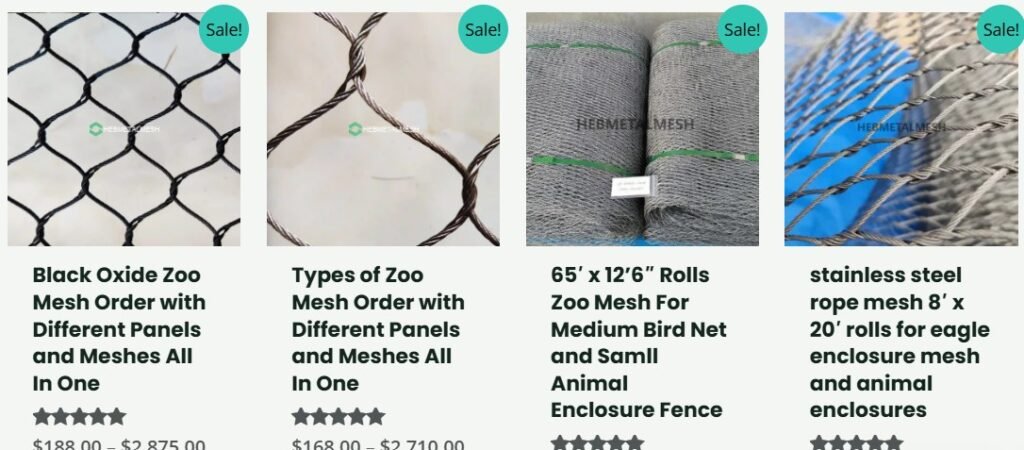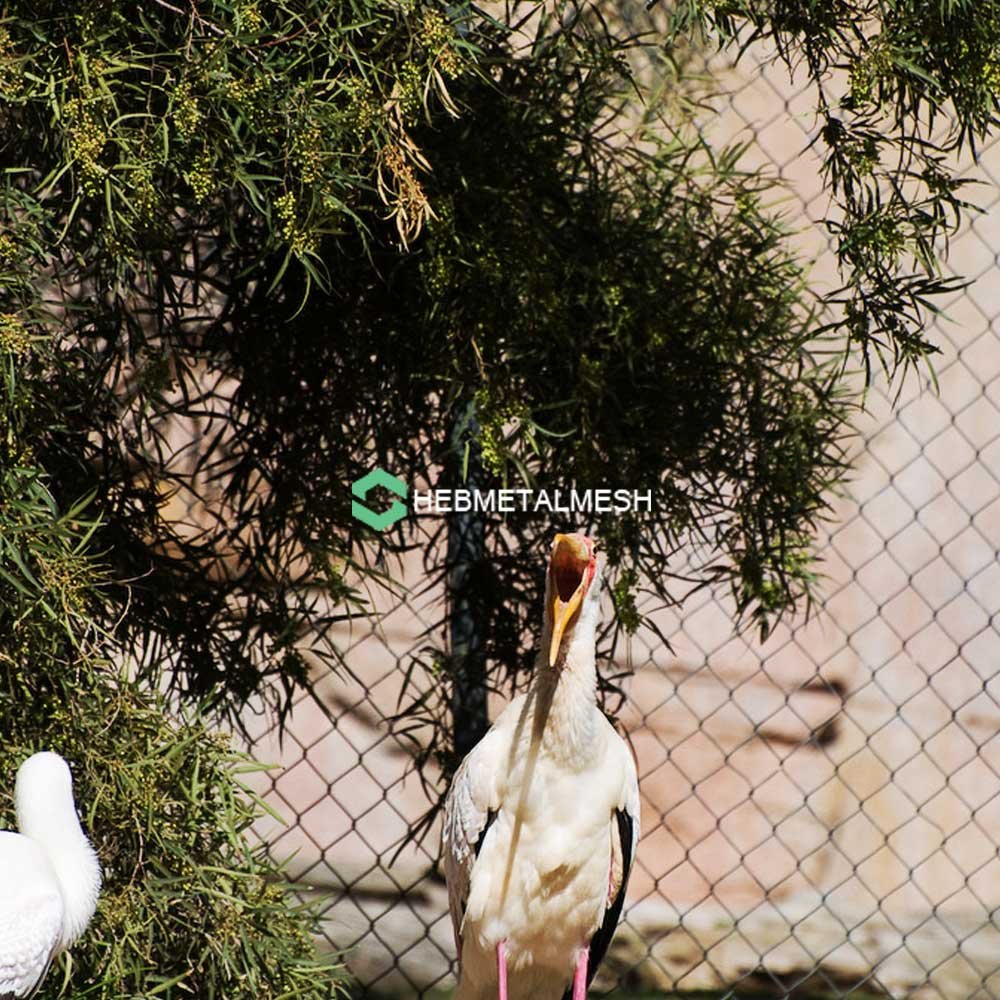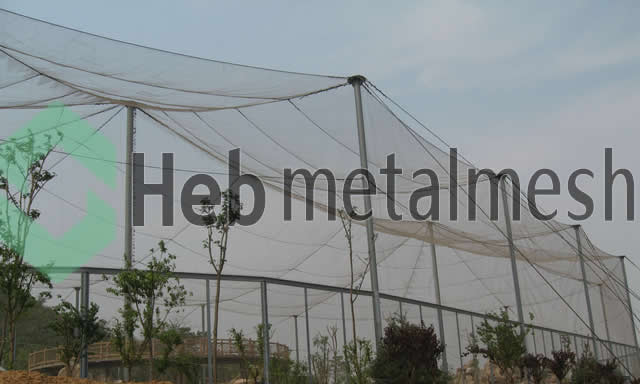Introduction to Bird Netting
Bird netting is a versatile and effective solution designed to control bird populations in various environments. Its primary purpose is to act as a barrier that prevents birds from accessing specific areas, thereby mitigating the potential disturbances and damages they may cause. This form of pest control is particularly important in settings such as residential properties, agricultural fields, and commercial establishments, where unwanted birds can become a nuisance.
The significance of bird netting cannot be overstated. In agricultural sectors, for instance, birds can pose a substantial threat to crops, leading to significant financial losses for farmers. By implementing bird netting, growers can safeguard their harvests from these invasive species, effectively protecting their livelihoods. Similarly, in urban areas, residential dwellings face problems with bird infestations, particularly from species like pigeons and sparrows that might create unsightly messes or damage property. Bird netting serves as an unobtrusive yet efficient solution to these issues, allowing homeowners to enjoy their spaces without the frustrations commonly associated with avian visitors.
Moreover, commercial properties, such as warehouses and retail establishments, benefit immensely from bird netting. In these settings, the accumulation of bird droppings can harm property integrity and pose health risks to employees and customers. By installing bird netting, businesses can maintain a cleaner environment, thus upholding their reputation and ensuring patron safety. With options available in various materials and configurations, bird netting provides adaptable solutions tailored to meet different needs. Its ease of installation and low maintenance further enhance its appeal as a long-term strategy for bird control. Overall, bird netting emerges as a crucial preventive measure, promoting harmony between human activities and nature while effectively addressing the challenges posed by unwanted birds.
Understanding Different Mesh Sizes
When it comes to bird netting, selecting the appropriate mesh size is crucial for effective pest control and protecting both crops and properties from various bird species. The various mesh sizes available serve specific purposes, depending on the size of birds and the environment in which the netting will be used. One of the most commonly recommended mesh sizes is 3/4 inch, which is particularly effective for keeping small birds such as sparrows, finches, and other similar species at bay. This configuration ensures that these smaller birds are unable to penetrate the netting, safeguarding plants and preventing unwanted nesting.
For larger bird species, the 1-inch mesh size is the most suitable option. This size effectively deters medium-sized birds like pigeons and starlings, which could otherwise cause significant damage to crops and property. The 1-inch mesh strikes a balance, allowing larger birds to be excluded while still being constructed to withstand the environmental stresses found in agricultural and urban settings. By using this mesh size, property owners can ensure a more extensive protective coverage against larger bird species.
Additionally, there are larger mesh options available, such as 1.5-inch and 2-inch, which cater to the exclusion of even larger birds, including gulls and crows. These broader openings can be beneficial for specific applications where the risk from larger birds is a concern, like protecting extensive agricultural fields or industrial sites. While selecting the right mesh size for bird netting, it is important to consider various factors such as the species of birds, the location, and the intended use to ensure maximized effectiveness and durability of the netting solution.
Hebmetalmesh: Premium Quality Stainless Steel Wire Rope
Hebmetalmesh stands out as a prominent manufacturer of high-quality stainless steel wire rope bird netting, providing effective solutions for a variety of applications. The use of stainless steel in bird netting brings a plethora of advantages, setting it apart from alternative materials commonly found on the market. One significant benefit is the exceptional durability of stainless steel, which can withstand harsh environmental conditions without succumbing to wear and tear. This characteristic makes it an ideal choice for outdoor installations where longevity and reliability are paramount.
Corrosion resistance is another key feature of stainless steel wire rope bird netting. Unlike traditional materials that may rust or deteriorate when exposed to moisture, ultraviolet (UV) radiation, or extreme temperatures, stainless steel maintains its structural integrity over time. This resistance ensures that your bird netting remains functional and visually appealing, regardless of the weather conditions it may encounter. Furthermore, the prolonged lifespan of stainless steel wire rope minimizes the need for frequent replacements, ultimately translating to cost savings for consumers.
In addition to durability and resistance, stainless steel bird netting offers a level of flexibility that enhances its usability. The strength-to-weight ratio of stainless steel is notably high, allowing for lightweight installations that are easy to handle while still providing tremendous strength. This adaptability means that various configurations can be achieved without compromising the security or effectiveness of the netting. Whether it is securing crops in an agricultural setting or providing a barrier in urban environments, Hebmetalmesh’s stainless steel wire rope bird netting is engineered to meet diverse needs.
In conclusion, choosing Hebmetalmesh for stainless steel wire rope bird netting ensures you are investing in a reliable, durable, and versatile solution that excels in life’s unpredictable outdoor environments.
Customizable Roll Sizes for Cost Efficiency

When selecting bird netting for various applications, one of the most significant advantages offered by Hebmetalmesh is the availability of customizable roll sizes. Specifically, large rolls, such as 20′ x 60′ and 30′ x 60′, are particularly beneficial for both residential and commercial projects. These dimensions allow for extensive coverage, reducing the need for multiple smaller pieces of netting, which can often lead to increased material waste and higher costs.
The flexibility of customizable roll sizes enables users to select dimensions that align perfectly with their unique installation requirements. For instance, larger areas requiring protection from birds can be efficiently covered using fewer large rolls, which contributes to a cost-effective approach. By minimizing the number of seams and joints, the risk of gaps—which could allow birds to infiltrate—is also reduced. Consequently, this strategic selection not only streamlines the installation process but also enhances the overall effectiveness of the bird netting.
Furthermore, customizing roll sizes based on specific project needs can lead to significant time savings during both installation and maintenance. Rather than managing multiple pieces of netting, installers can work with manageable, larger sections that are simpler to handle and maneuver. This ease of installation allows for a quicker turnaround time in establishing bird-free zones, which is crucial for protecting crops, warehouses, and outdoor spaces from avian interference. Ultimately, with the combination of tailored roll sizes and improved installation efficiency, users are left with a solution that is both economically advantageous and proficient in safeguarding against the challenges posed by intrusive birds.
Expert Quality Assurance from Our Factory
At Hebmetalmesh, quality assurance is at the core of our production processes for bird netting solutions. Our factory employs a rigorous quality control system that not only meets but exceeds industry standards, ensuring that every product leaving our facility is of the highest possible caliber. This commitment begins with the selection of premium raw materials, which are carefully sourced from reputable suppliers. Each material undergoes a comprehensive inspection to verify its durability, flexibility, and resistance to weather-related damages, critical qualities for effective bird netting.
Once production begins, our experienced team of professionals meticulously oversees each step of the manufacturing process. We utilize advanced technology and equipment that allows for precise measurements and consistent product quality. Regular monitoring and testing are performed at various stages, ensuring that our bird netting adheres to specific dimensions and performance criteria. This thorough approach helps eliminate defects and ensures that our customers receive a reliable solution tailored to their particular needs.
The commitment to quality does not end with production; it extends to our delivery processes as well. Hebmetalmesh understands the importance of timely dispatch and delivery. To achieve this, we have established an efficient logistics system designed to streamline the shipping process, thus guaranteeing that your bird netting products arrive on schedule. Furthermore, we maintain open communication with our clients throughout the delivery process, providing updates and addressing any concerns promptly.
By implementing such stringent quality assurance measures, Hebmetalmesh assures our clients that they can rely on our bird netting solutions for both safety and effectiveness, ultimately enhancing their overall experience with our products. Our dedication to excellence not only fulfills customer expectations but also fosters long-term partnerships built on trust and dependability.
Installation Tips for Effective Bird Control
When it comes to installing bird netting, proper preparation is key to achieving effective bird control. Start by assessing the area where you intend to install the netting. Identify potential access points for birds and determine the dimensions of the space that requires coverage. Accurate measurements will help ensure that the netting is appropriately sized and will adequately prevent birds from entering that particular area.
Before embarking on the installation, gather the necessary tools. These typically include a measuring tape, sturdy scissors or a utility knife, a heavy-duty staple gun or zip ties, anchors for securing the netting, and gloves for safety. It is also beneficial to have an extra pair of hands available to assist with the installation process, especially in large or awkwardly shaped areas.
One common pitfall during installation is improper tensioning of the netting. Ensure that the bird netting is snugly secured but not overly tight, which could lead to tearing or damage. When securing the netting, avoid gaps that could allow birds to infiltrate. Additionally, take care to fasten the netting to the structure without leaving sharp edges exposed, as this could pose risks to both the netting and any individuals working in the vicinity.
Consider the best time for installation as well; avoid periods of inclement weather that might complicate the process or lead to hastily completed tasks. In addition, regular maintenance checks are recommended to monitor the condition of the bird netting, ensuring that it remains intact and functional. Properly installed bird netting not only aids in preventing birds from entering undesirable areas, but also plays a crucial role in contributing to effective long-term bird deterrence solutions.
Common Applications of Bird Netting
Bird netting serves a multitude of purposes across different sectors, demonstrating its versatility and adaptability. One prominent application is in residential gardens. Homeowners often use bird netting to protect their plants and vegetables from birds that may feed on the fruits of their labor. The lightweight yet durable material creates a physical barrier, ensuring that crops can grow undisturbed while allowing sunlight and rain to penetrate, fostering healthy vegetation.
In the agricultural sector, bird netting plays an essential role in safeguarding larger fields of crops. Farmers implement various types of netting to protect high-value produce, such as berries and cherries, which are particularly susceptible to avian pests. By covering entire sections of fields or orchards, bird netting effectively minimizes damage, thereby increasing yields and reducing the need for chemical interventions. This not only enhances the quality of the produce but also aligns with sustainable farming practices.
Commercial buildings are yet another area where bird netting proves invaluable. In urban environments, businesses often face challenges with pigeons and other birds nesting on rooftops or ledges, which can lead to structural damage and hygiene concerns. By installing bird netting around critical areas, companies can prevent nesting while maintaining the aesthetic appeal of their buildings. Furthermore, it reduces maintenance costs and the risks associated with bird droppings.
Beyond these applications, bird netting is utilized in various other settings such as warehouses, sports stadiums, and even in wildlife conservation projects. Each use case highlights the adaptability and effectiveness of bird netting in providing solutions to commonly faced challenges, promoting coexistence between humans and birds in an environmentally friendly manner.
Frequently Asked Questions about Bird Netting
Bird netting is a physical barrier made from durable materials like polyethylene or stainless steel, designed to prevent birds from accessing specific areas. It effectively protects gardens, rooftops, and fruit trees by creating a shield that deters birds without harming them. Ideal for those searching for “bird netting to protect gardens from birds,” this solution safeguards crops, structures, and outdoor spaces from damage caused by birds.
For “best bird netting for vegetable gardens,” lightweight polyethylene netting with small mesh (½-inch to ¾-inch) is recommended. It keeps out small birds like sparrows while allowing sunlight and water through. For fruit trees, opt for heavier-duty netting with UV resistance to withstand outdoor conditions. Ensure the netting is taut to prevent entanglement and maximize coverage.
Installing bird netting on balconies or roofs requires non-invasive tools like tension cables, zip ties, or adhesive hooks. For “installing bird netting on a balcony,” secure the netting to railings or frames using clips. On roofs, attach the netting to poles or eaves with hooks. Always leave a slight gap to avoid sagging and ensure the netting blends discreetly with your property’s aesthetics.
High-quality bird netting is designed to be bird-friendly, using smooth materials that prevent entanglement. Look for “eco-friendly bird netting options” with UV-stabilized polyethylene, which resists fraying. Avoid cheap, low-grade nets that can harm wildlife. Proper installation and regular maintenance also ensure safety by keeping the netting taut and intact.
UV-resistant bird netting typically lasts 5–10 years, depending on climate and usage. Designed to withstand sun exposure, rain, and wind, it’s a cost-effective, long-term solution for “durable bird netting for outdoor use.” Regularly inspect for tears or loose edges to extend its lifespan and maintain effectiveness.
Absolutely! “Bird netting solutions for agricultural areas” are customizable for farms, vineyards, and orchards. Heavy-duty, UV-stabilized nets with larger rolls (up to 50ft wide) cover expansive spaces efficiently. They protect crops like grapes and berries from flocks while allowing airflow and light penetration. Professional installation ensures optimal coverage and durability for commercial needs.
Conclusion and Call to Action
In summary, bird netting serves as an effective solution for managing avian issues in various settings, from agricultural fields to urban environments. The effectiveness of these netting solutions lies in their ability to create a physical barrier that deters birds without causing them harm. By choosing bird netting products from Hebmetalmesh, you gain access to a diverse range of high-quality materials that are designed to withstand the elements while providing long-term protection. Our offerings include different types of nets suitable for various applications, ensuring that you find the perfect fit for your specific needs.
Furthermore, the versatility of bird netting extends its usability across numerous industries, including agriculture, construction, and landscaping. The benefits encompass not only the safeguarding of crops and property but also the prevention of costly repairs resulting from bird infestations. Hebmetalmesh is committed to delivering solutions that prioritize durability and effectiveness, making us a trusted name in the bird control industry.
As you consider your options for bird netting, we encourage you to explore our extensive catalog of products. Each solution is engineered to provide maximum efficiency, ensuring you have the best means to protect your investments. We invite you to reach out for personalized consultations or quotes tailored to your specific requirements. Our team of experts is ready to assist you with any inquiries you may have, ensuring that you make an informed decision about your bird netting needs. Visit our website to learn more about our offerings and discover how Hebmetalmesh can help you tackle your bird-related challenges effectively.


